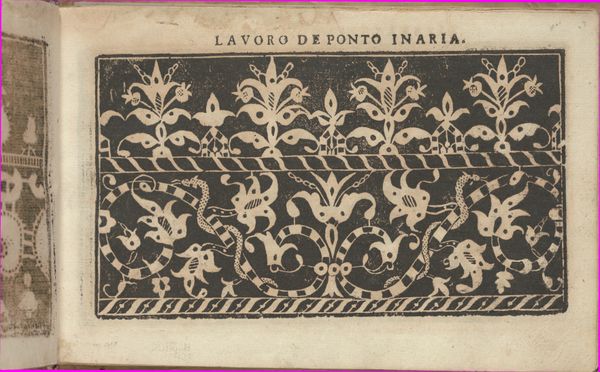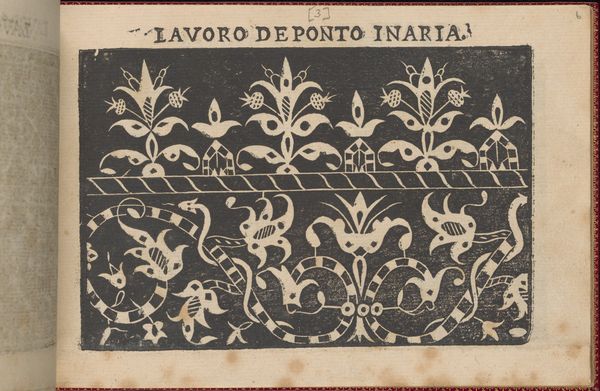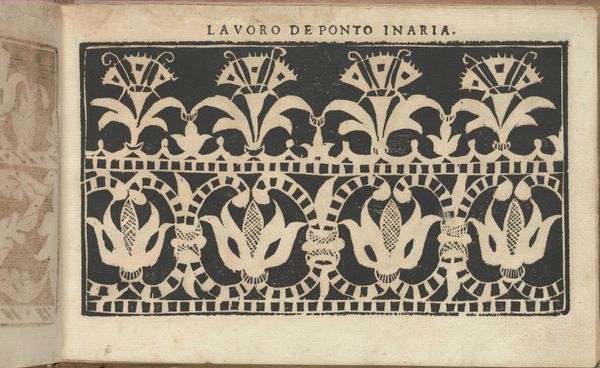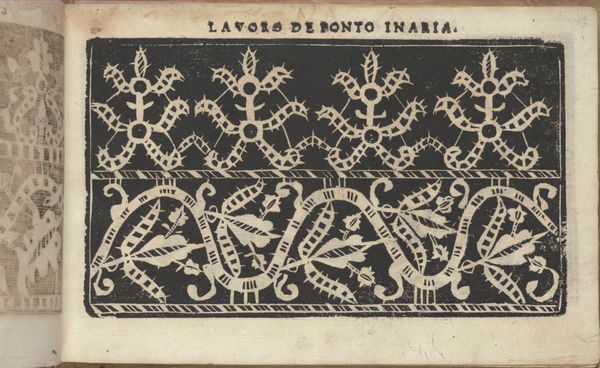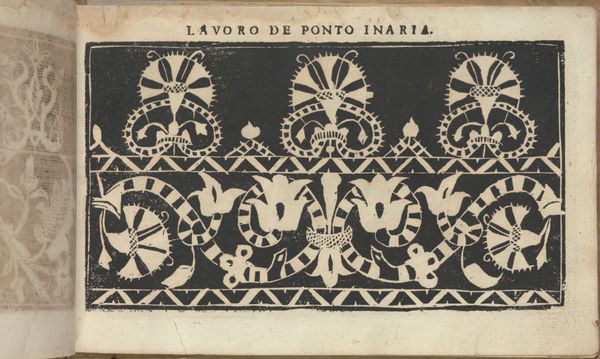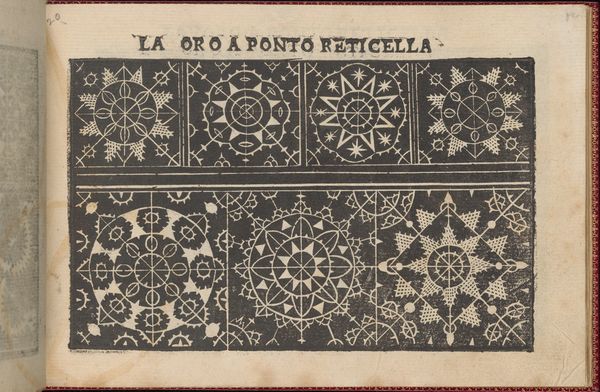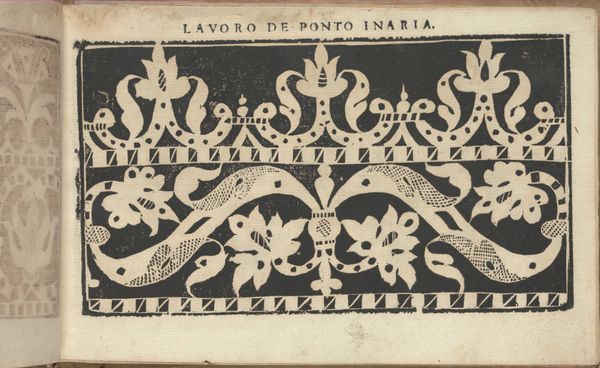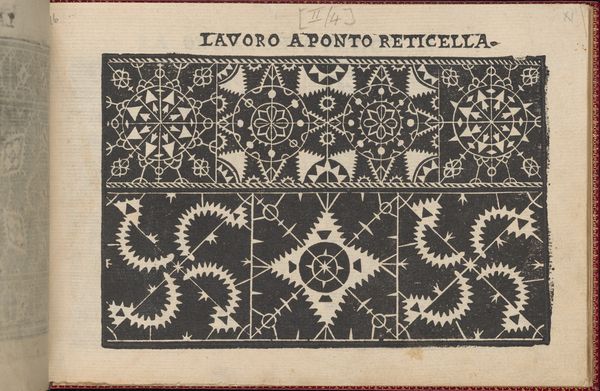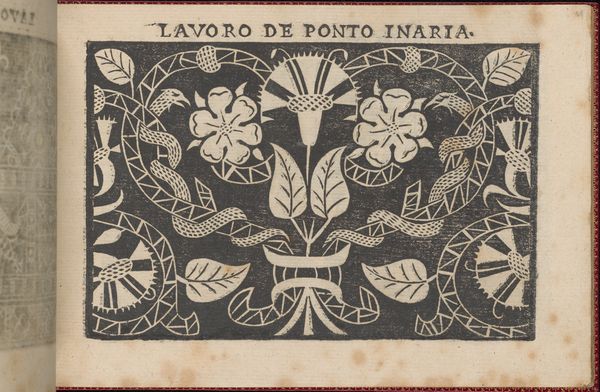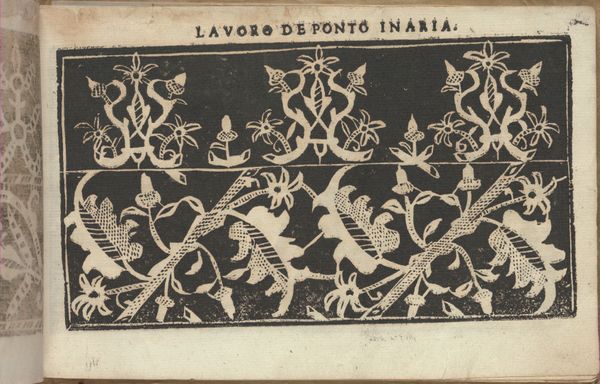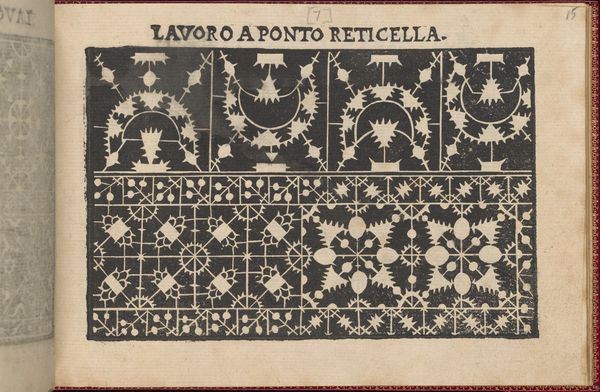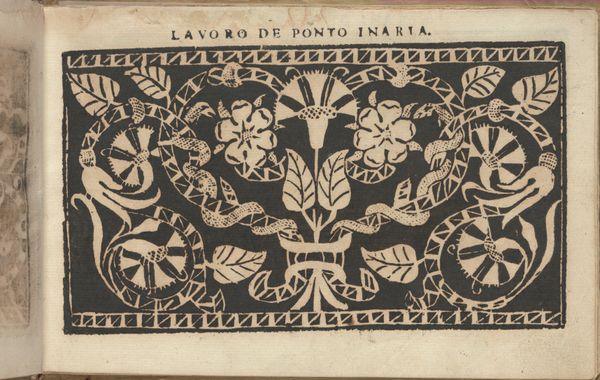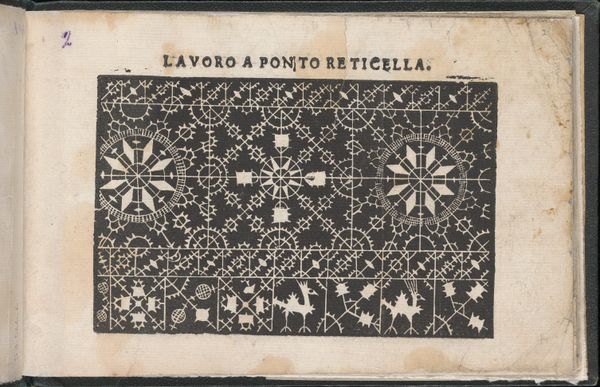
Studio delle virtuose Dame, page 6 (recto) 1597
0:00
0:00
drawing, print, textile
#
drawing
# print
#
textile
#
geometric
#
line
#
decorative-art
#
italian-renaissance
Dimensions: Overall: 5 1/2 x 8 1/16 in. (14 x 20.5 cm)
Copyright: Public Domain
Editor: Here we have a print from Isabella Catanea Parasole’s “Studio delle virtuose Dame, page 6 (recto)”, created in 1597. It features patterns for needle lace, a popular textile art of the time. What strikes me is how this detailed work, a simple black and white print, gave women access to intricate designs. What do you make of it? Curator: It's fascinating to consider the sociopolitical implications of pattern books like this one. In the late 16th century, needle lace wasn't just decorative; it was a status symbol. Books like Parasole’s democratized access to these high-end designs, spreading skills and potentially empowering women economically within the domestic sphere. This print wasn't just about aesthetics, it played a role in disseminating knowledge and possibly influencing social mobility. Do you see any evidence of the influence of other cultures in the patterns? Editor: I see geometric shapes that might come from diverse cultural traditions through trade routes. Also, I wonder how accurate it is to use “democratized access,” maybe wealthy women still have much more time to do things like this? Curator: Precisely. It’s not about erasure, but a critical examination of who benefited most. The language surrounding such works often celebrates their supposed democratization of skills, yet access remained largely mediated by class and social standing. Editor: This gives me so much to consider! The piece really showcases the convergence of art, craft, and women’s socio-economic roles during the late Renaissance. Curator: Absolutely! The intersectionality between access to arts and social position becomes obvious!
Comments
No comments
Be the first to comment and join the conversation on the ultimate creative platform.
